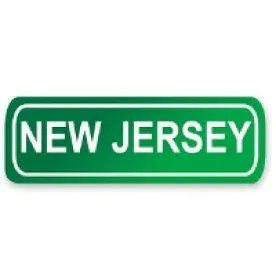New Jersey’s Governor Murphy recently signed into law S-232, the “toughest” environmental law of its kind in the country, that is aimed at curbing the cumulative environmental and public health impacts in The Garden State. S-232 now requires facilities that meet certain criteria to additionally undergo a review by the New Jersey Department of Environmental Protection for impacts on the environment and socio-economic disadvantaged communities. Such a review is necessary in order to obtain a permit, registration, or license issued by a New Jersey State agency under approximately eighteen environmental protection laws[1].
Going forward, facilities that will be subject to this additional review as part of the permitting process are power plants that generate at least 10 megawatts of electricity (one megawatt of energy can power 100 homes), sewage treatment plants with a capacity of greater than 50 million gallons per day (Olympic swimming pools hold approximately 600,000 gallons), solid waste facilities, landfills, and any facility defined as a major source of air pollution under the Federal Clean Air Act (i.e., any facility that emits at least 10 tons of one pollutant or 25 tons of a combination of pollutants per year). The new law seeks to protect communities where at least 35% of households are low-income, at least 40% of residents identify as minority or as members of a State-recognized tribal community, or at least 40% of the households are not proficient in speaking/reading English. For prospective, in Newark, 28% of all residents are living in poverty, and 49.7% of residents are African American[2], and in Princeton, 5.8% of all residents are living in poverty, and 5.8% of residents are African American[3]. The law requires New Jersey Department of Environmental Protection to publish online a list of overburdened communities that would be protected under the new law within 120 days of the effective date the law.
Governor Murphy indicated that pollution from such facilities disproportionately harms the communities that neighbor these industrial facilities. For instance, every industrial incinerator in New Jersey is located in a community of color. This law is the “toughest” in the country given facilities that otherwise meet all other regulatory requirements may still be denied permits because of their location to protected communities. Therefore, residents of New Jersey should monitor how this law may impact zoning ordinances for these types of regulated facilities.
[1] R.S.12:5-1 et seq.; P.L.1975, c.232 (C.13:1D-29 et al.); the “Solid Waste Management Act,” P.L.1970, c.39 (C.13:1E-1 et seq.); section 17 of P.L.1975, c.326 (C.13:1E-26); the “Comprehensive Regulated Medical Waste Management Act,” P.L.1989, c.34 (C.13:1E-48.1 et al.); P.L.1989, c.151 (C.13:1E 99.21a et al.); the “New Jersey Statewide Mandatory Source Separation and Recycling Act,” P.L.1987, c.102 (C.13:1E 99.11 et al.); the “Pesticide Control Act of 1971,” P.L.1971, c.176 (C.13:1F-1 et seq.); “The Wetlands Act of 1970,” P.L.1970, c.272 (C.13:9A-1 et seq.); the “Freshwater Wetlands Protection Act,” P.L.1987, c.156 (C.13:9B-1 et al.); the “Coastal Area Facility Review Act,” P.L.1973, c.185 (C.13:19-1 et seq.); the “Highlands Water Protection and Planning Act,” P.L.2004, c.120 (C.13:20- 1 et seq.), the “Air Pollution Control Act (1954),” P.L.1954, c.212 (C.26:2C-1 et seq.); the “Water Supply Management Act,” P.L.1981, c.262 (C.58:1A-1 et al.); P.L.1947, c.377 (C.58:4A 5 et seq.); the “Water Pollution Control Act,” P.L.1977, c.74 (C.58:10A-1 et seq.); P.L.1986, c.102 (C.58:10A-21 et seq.); or the “Flood Hazard Area Control Act,” P.L.1962, c.19 (C.58:16A 50 et seq.); except that “permit” shall not include any authorization or approval necessary to perform a remediation, as defined pursuant to section 23 of P.L.1993, c.139 (C.58:10B-1), or any authorization or approval required for a minor modification of a facility’s major source permit for activities or improvements that do not increase emissions.
[2] https://www.census.gov/quickfacts/fact/table/newarkcitynewjersey,US/PST045219
[3] https://www.census.gov/quickfacts/princetonnewjersey




 />i
/>i

